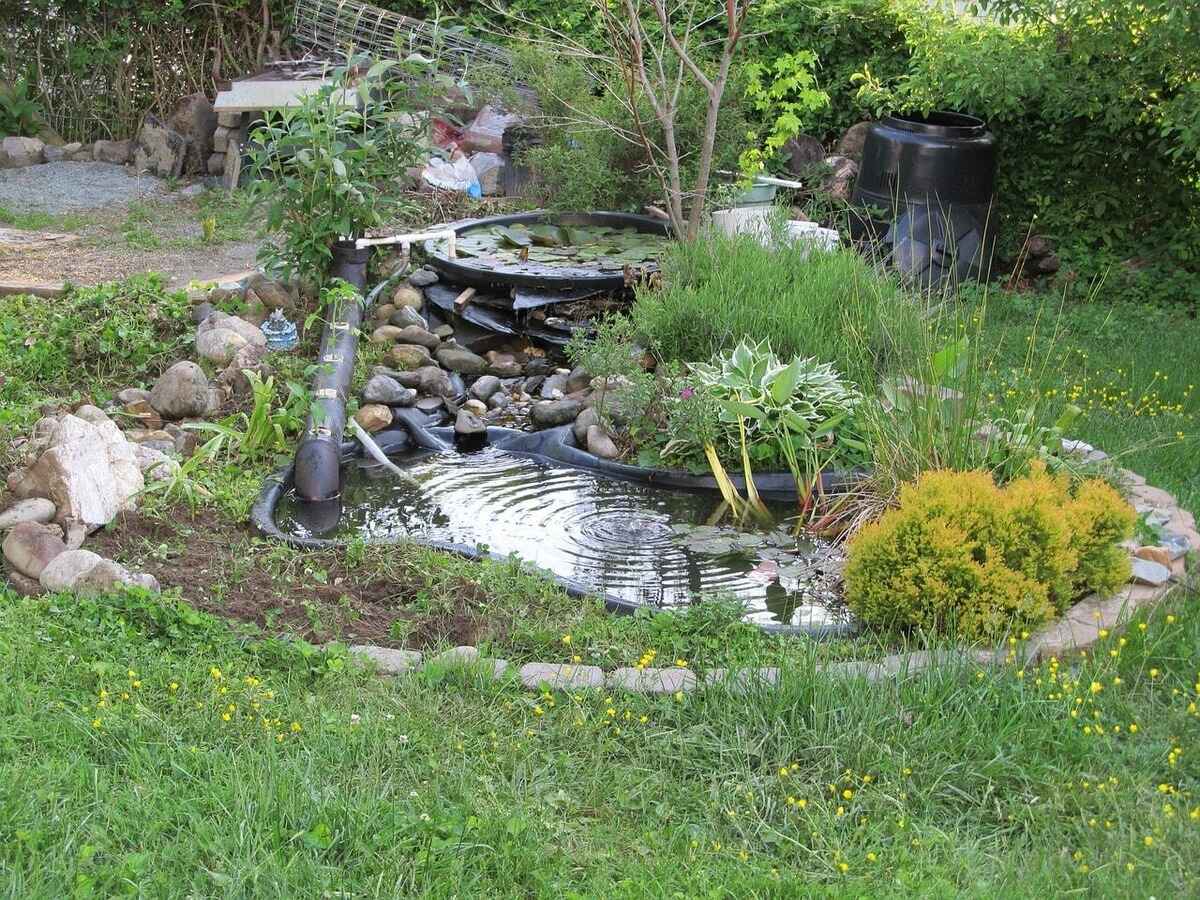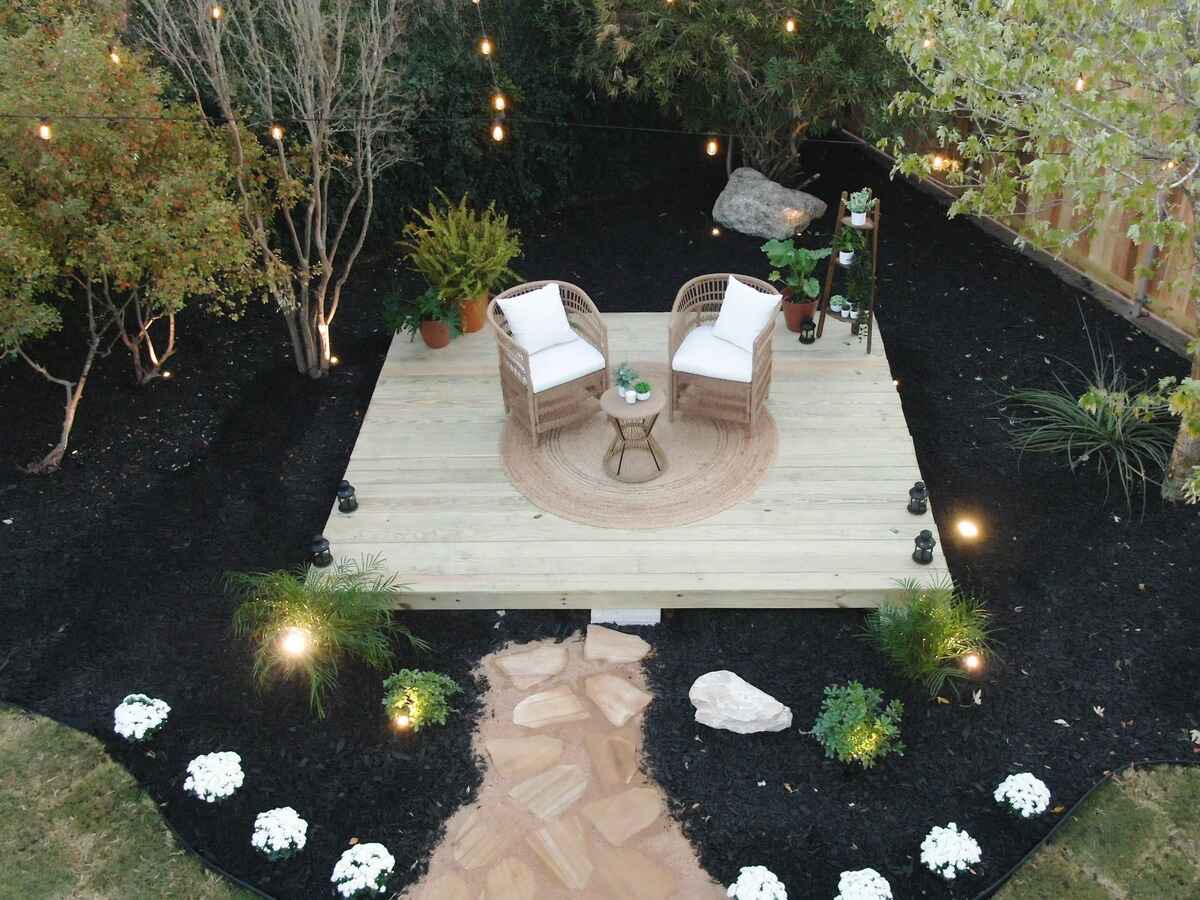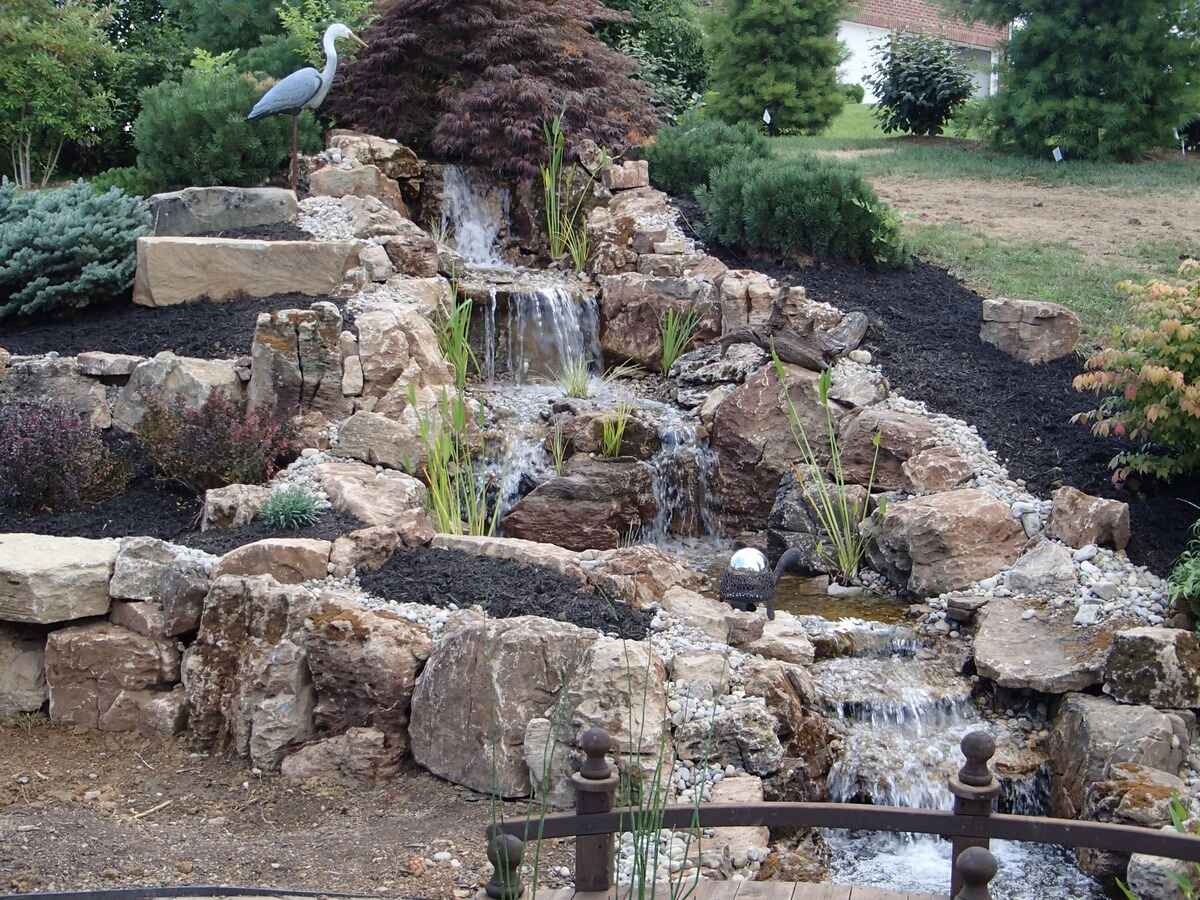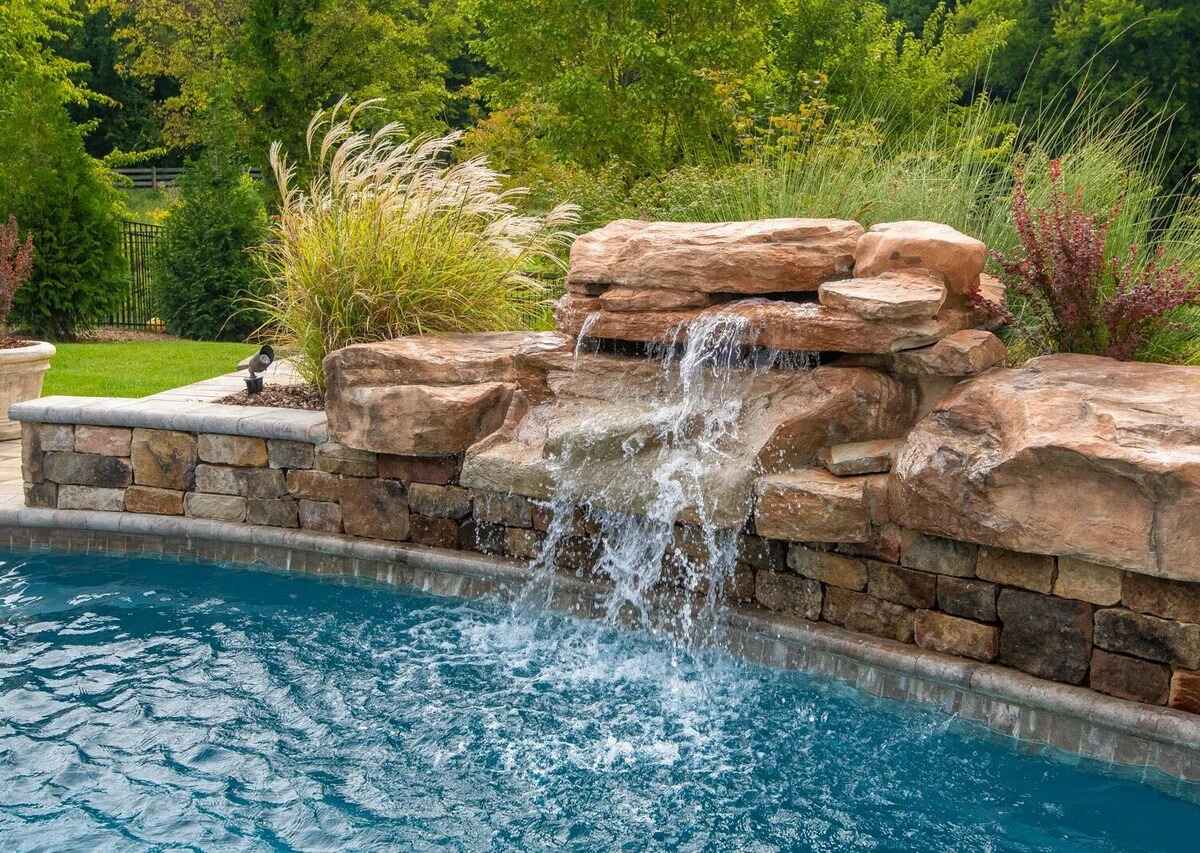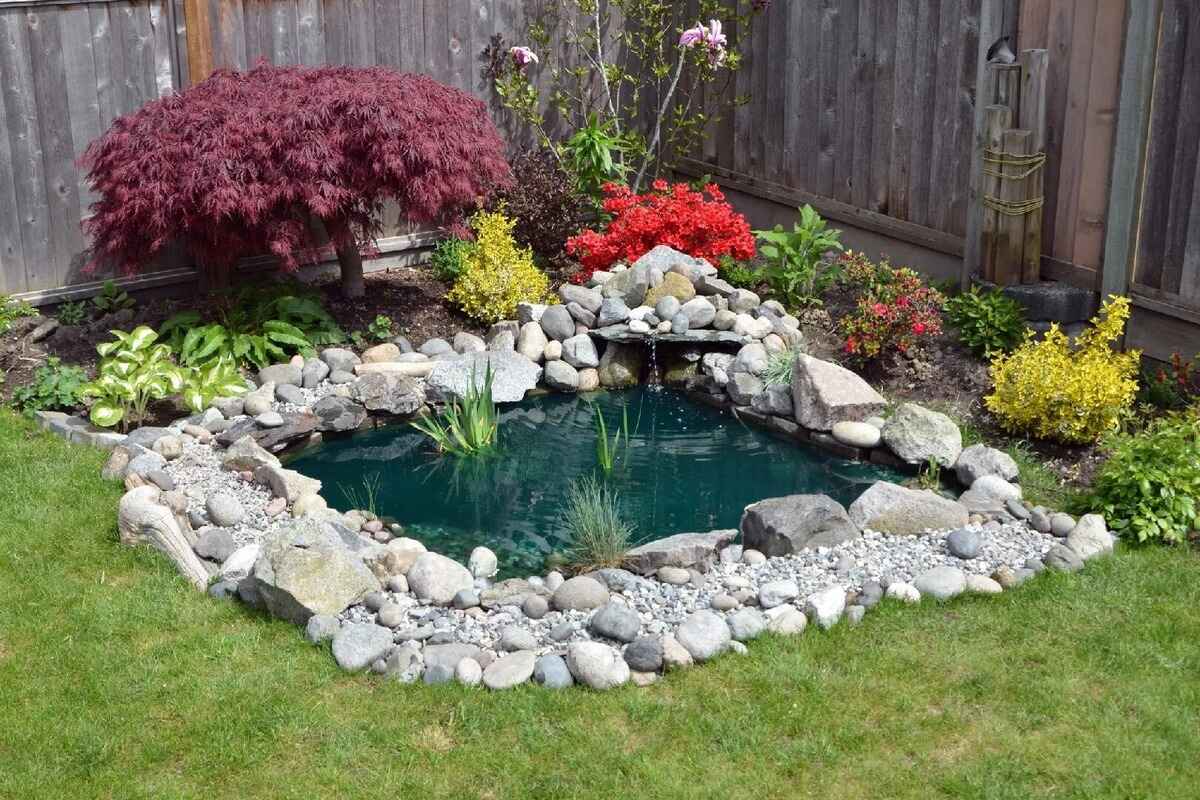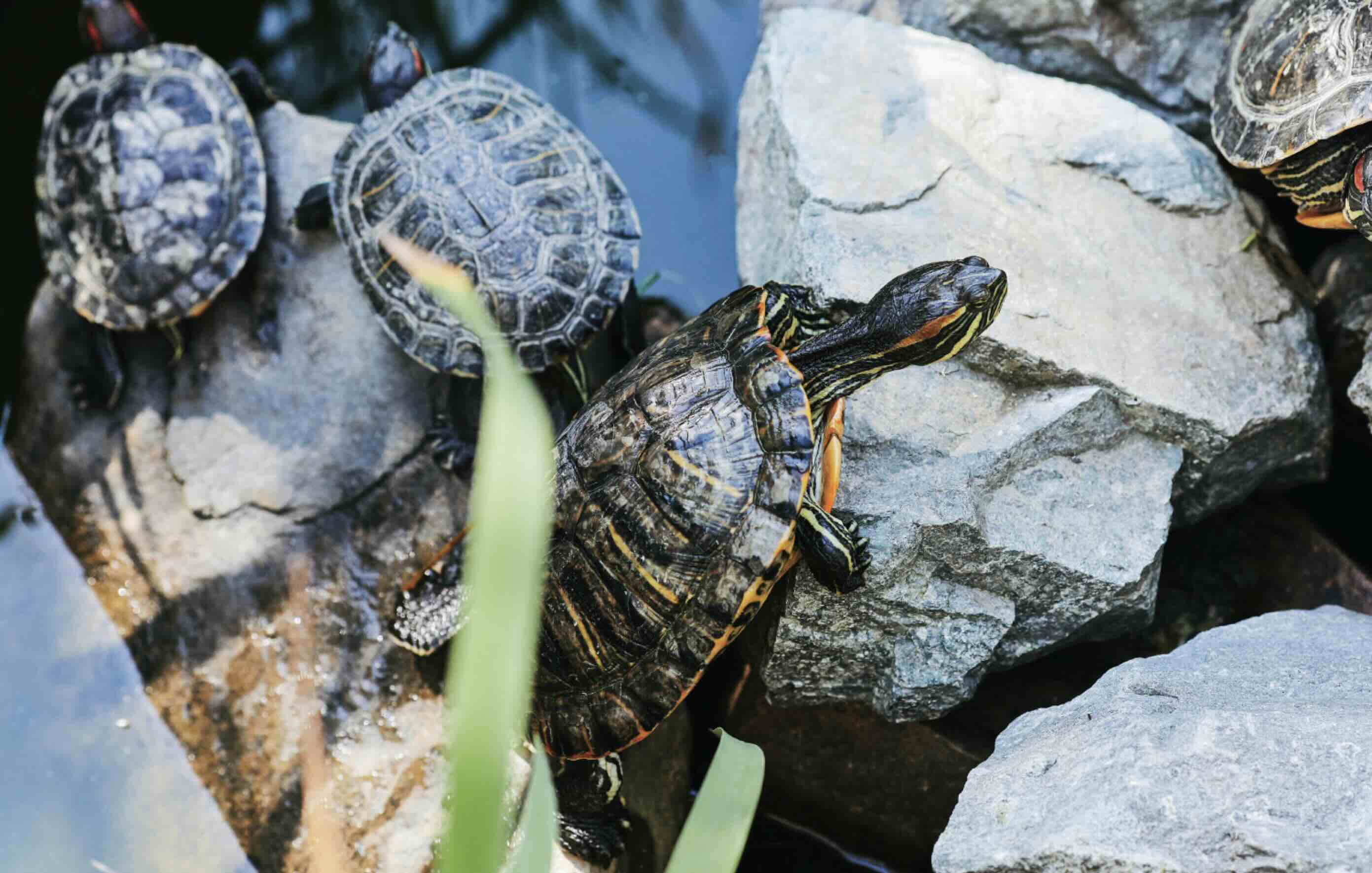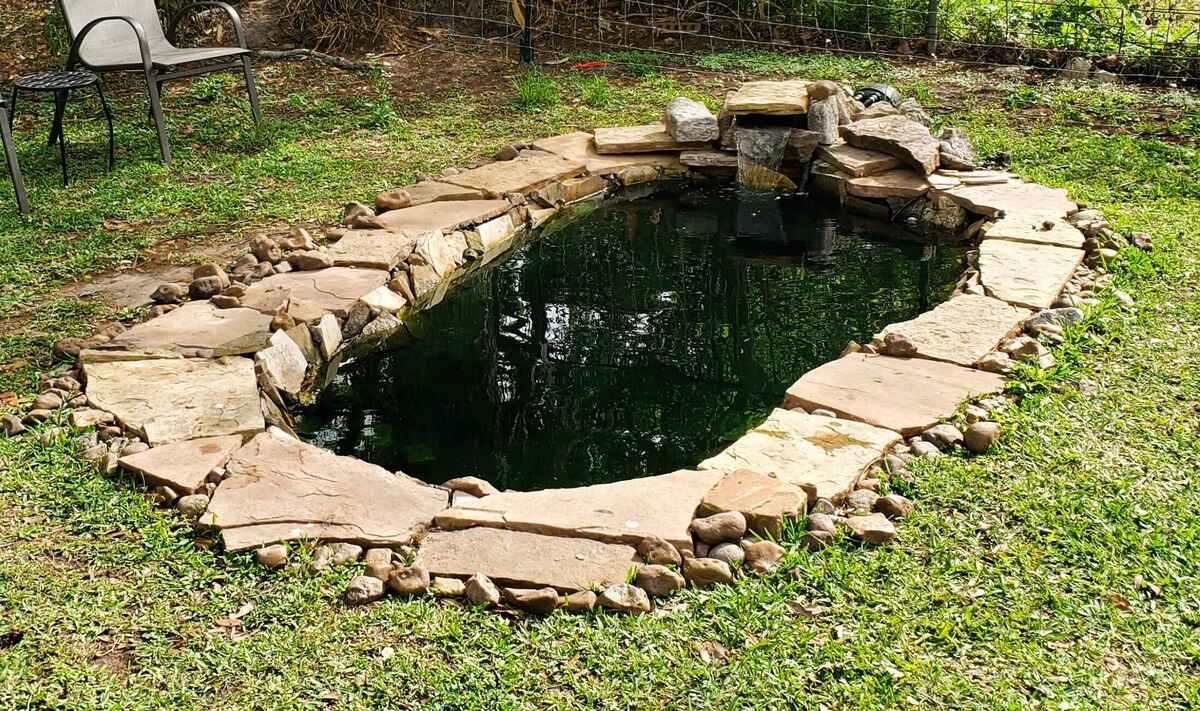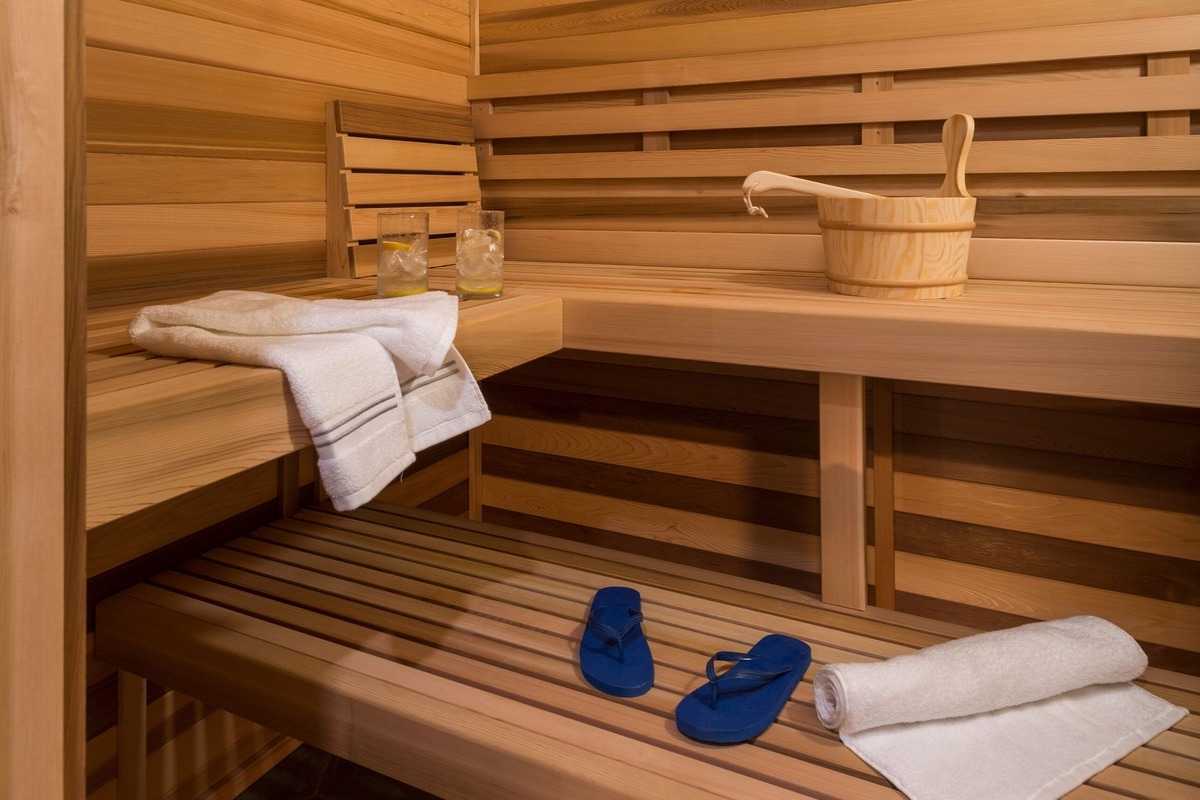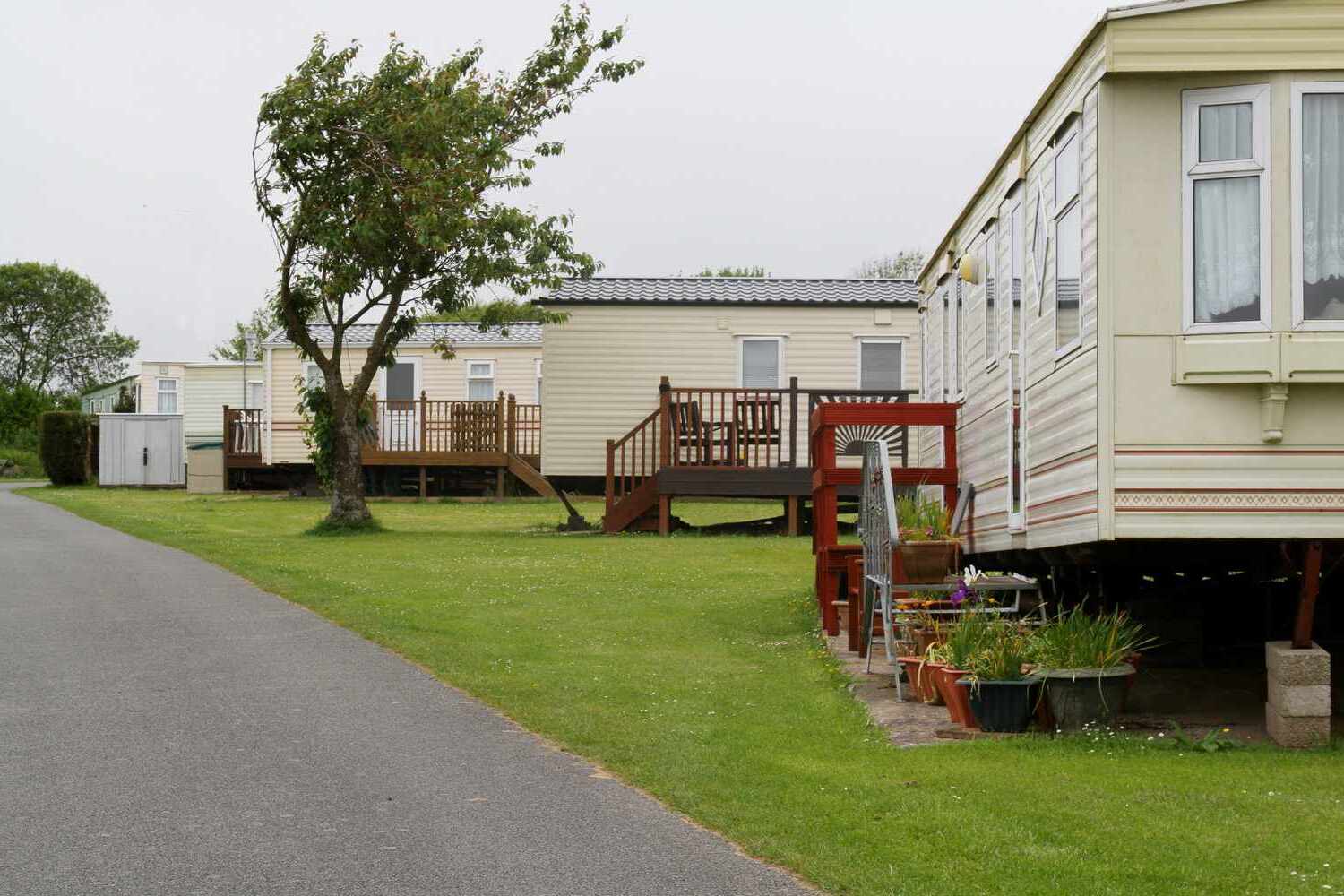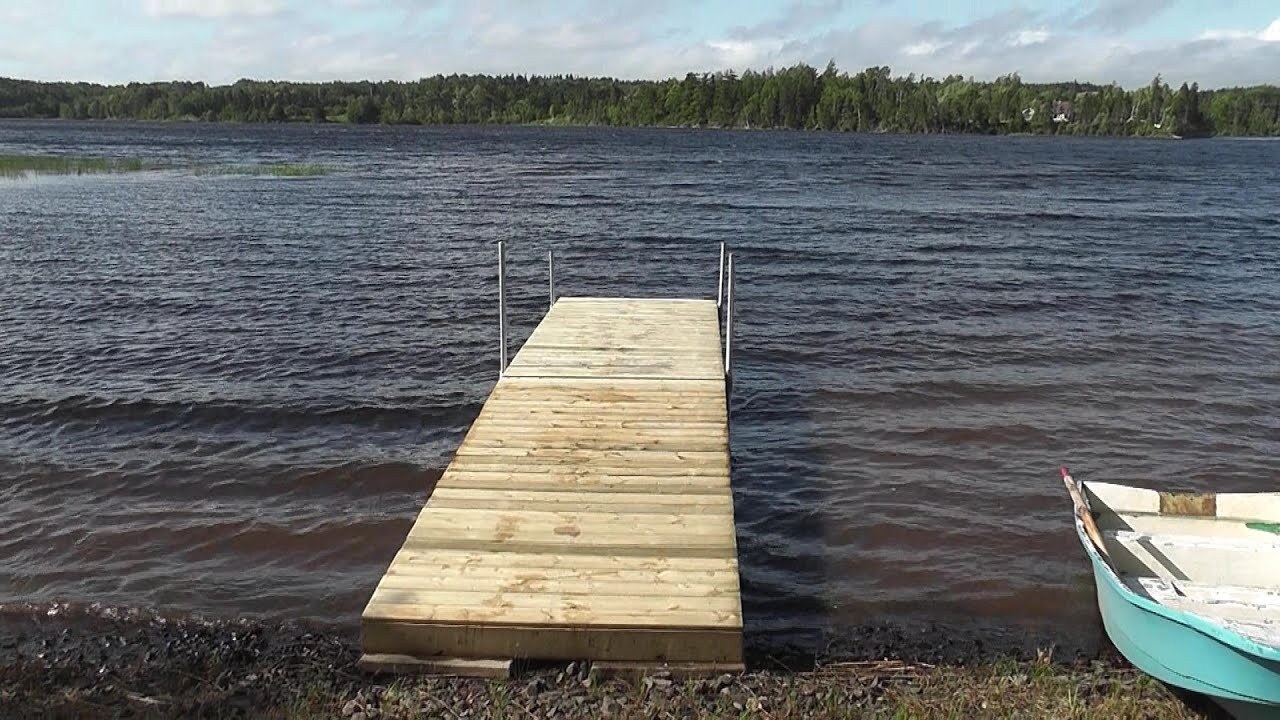Home>Outdoors & Camping>Landscaping>How To Build A Koi Pond With Waterfall
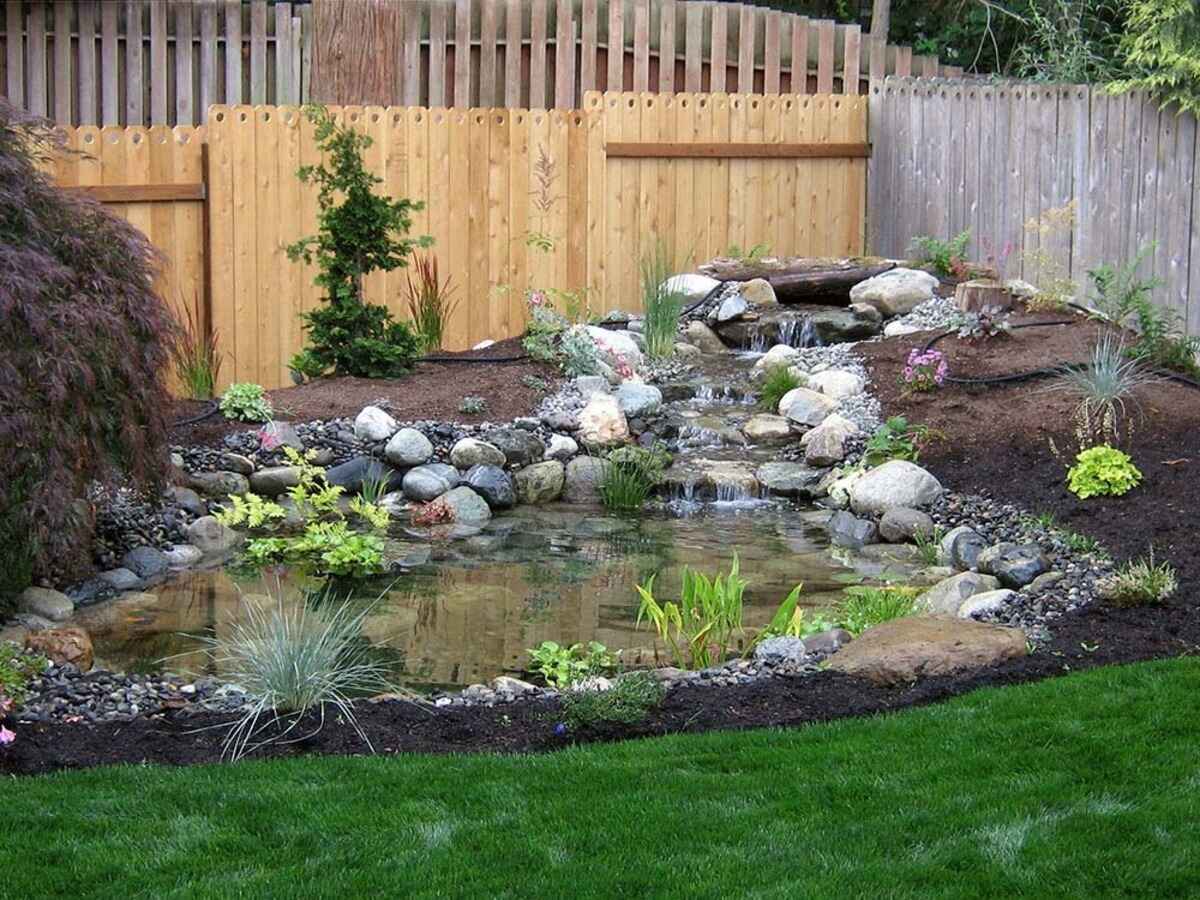

Landscaping
How To Build A Koi Pond With Waterfall
Published: March 7, 2024

Content Creator for Outdoors & Camping, Sophie turns any yard into a sustainable paradise. Her dedication to DIY outdoor projects and volunteer work in community gardens shares joy and knowledge.
Learn how to enhance your landscaping with a stunning koi pond and waterfall. Our step-by-step guide will help you create a tranquil outdoor oasis.
(Many of the links in this article redirect to a specific reviewed product. Your purchase of these products through affiliate links helps to generate commission for Twigandthistle.com, at no extra cost. Learn more)
Introduction
So, you've been dreaming of having your own tranquil oasis in your backyard, complete with the soothing sounds of a babbling waterfall and the graceful beauty of colorful koi fish. Well, you're in luck because building a koi pond with a waterfall is not as daunting as it may seem. With the right guidance and a bit of elbow grease, you can create a stunning focal point for your outdoor space that will be the envy of all your neighbors. In this guide, we'll walk you through the step-by-step process of bringing your koi pond and waterfall vision to life. Let's dive in and get started on this exciting DIY project!
Read more: How To Build A Pond Waterfall
Planning Your Koi Pond
Before you start digging up your backyard, it's crucial to have a well-thought-out plan for your koi pond. Here are the essential steps to consider when planning your koi pond:
-
Set Your Budget: Determine how much you're willing to invest in your koi pond project. This will help you make decisions about the size, materials, and additional features.
-
Research Local Regulations: Check with your local authorities to ensure that you comply with any regulations or permits required for building a pond on your property.
-
Consider Pond Size: Decide on the size of your pond based on the available space in your yard and the number of koi fish you plan to keep. A general rule of thumb is to allow 250 gallons of water for each adult koi.
-
Think About Depth: Koi ponds should be at least 3 feet deep to provide adequate space for the fish to swim and to protect them from predators and extreme temperatures.
-
Plan for Filtration and Aeration: Research and decide on the type of filtration and aeration system you'll use to keep the water clean and oxygenated for your koi.
By carefully planning these aspects, you'll be well-prepared to move on to the next steps in creating your koi pond with a stunning waterfall feature.
Choosing the Right Location
Selecting the perfect spot for your koi pond is crucial to its long-term success. Here are some key factors to consider when choosing the right location for your koi pond with a waterfall:
-
Sunlight Exposure: Look for an area in your yard that receives a good balance of sunlight and shade. Too much direct sunlight can lead to excessive algae growth, while too much shade can hinder the growth of aquatic plants.
-
Accessibility: Ensure that the location of your pond is easily accessible for maintenance and cleaning. You'll want to have enough space to maneuver around the pond and reach all areas without difficulty.
-
Distance from Trees: Avoid locating your pond too close to trees, as falling leaves can create maintenance challenges and potentially pollute the water. Additionally, tree roots can pose a threat to the structural integrity of the pond over time.
-
Slope and Drainage: Take note of the natural slope of your yard and consider the drainage patterns. It's essential to position the pond in an area where rainwater runoff won't flood the pond or wash away the surrounding soil.
-
Visibility: Think about the visual impact of the pond from various vantage points, both inside your home and in your outdoor living spaces. You'll want to enjoy the beauty of your koi pond and waterfall from different angles.
By carefully considering these factors, you can choose a location that will provide the ideal environment for your koi and create a visually appealing focal point in your backyard.
Designing Your Waterfall
Designing the waterfall for your koi pond is where you can let your creativity flow. A well-designed waterfall not only adds visual appeal but also contributes to the overall health of the pond by providing aeration and circulation. Here's how to design a stunning waterfall for your koi pond:
-
Natural Look or Formal Design: Decide on the overall look you want for your waterfall. Do you prefer a natural, organic look with irregular rocks and cascading water, or a more formal design with straight lines and geometric shapes? The choice will influence the selection of materials and the construction process.
-
Consider the Sound: The sound of running water is a key element of a waterfall. Think about the type of sound you want your waterfall to produce. Do you prefer a gentle, trickling sound or a more dramatic, cascading effect? This will influence the height and flow of the waterfall.
-
Choosing the Right Rocks: Selecting the right rocks is crucial for achieving a natural-looking waterfall. Look for a variety of sizes and shapes to create visual interest. Flat rocks can be used for the spillway, while larger boulders can anchor the waterfall structure.
-
Plan for Planting: Incorporating aquatic plants around the waterfall can enhance its natural beauty. Consider adding water-loving plants such as water lilies, lotus, or cattails to soften the edges and blend the waterfall seamlessly into the surrounding landscape.
-
Incorporate Lighting: Adding lighting to your waterfall can create a stunning visual effect, especially at night. Submersible LED lights can be strategically placed to illuminate the cascading water, creating a magical ambiance in your outdoor space.
-
Ensure Proper Water Flow: The success of your waterfall depends on proper water flow. Plan the layout to ensure a smooth, even flow of water down the waterfall, avoiding any areas of stagnation or excessive splashing.
By carefully considering these design elements, you can create a waterfall that not only enhances the beauty of your koi pond but also provides a natural and harmonious habitat for your koi fish.
Selecting the Right Materials
When it comes to building a koi pond with a waterfall, selecting the right materials is crucial for ensuring the longevity, functionality, and aesthetic appeal of your water feature. Here's a detailed look at the essential materials you'll need for this project:
Read more: How To Build A Pond
Pond Liner
The pond liner is a fundamental component that holds the water in your koi pond. Choose a high-quality, fish-safe pond liner that is durable and resistant to UV rays, punctures, and tears. EPDM rubber liners and PVC liners are popular choices for their flexibility, longevity, and fish-friendly properties.
Waterfall Spillway
A waterfall spillway is the mechanism that creates the cascading effect of water in your waterfall. Select a spillway that is appropriately sized for the flow rate of your pump and the desired width of the waterfall. Look for spillways made from sturdy materials such as stainless steel or durable plastic to withstand the constant water flow.
Rocks and Boulders
The selection of rocks and boulders is crucial for achieving a natural and visually appealing waterfall. Choose a variety of rocks in different sizes, shapes, and colors to create texture and visual interest. Flat rocks are ideal for creating the spillway, while larger boulders can anchor the waterfall structure and provide a natural look.
Water Pump
A reliable water pump is essential for circulating and aerating the water in your koi pond and powering the waterfall. Select a pump that is specifically designed for use in ponds and water features, with the capacity to handle the volume of water in your pond and the desired flow rate for your waterfall.
Read more: How To Build A Waterfall
Filtration System
A proper filtration system is vital for maintaining the water quality in your koi pond. Choose a high-quality biological and mechanical filtration system that is sized appropriately for the volume of water in your pond and the number of koi fish. Consider additional features such as UV clarifiers to control algae growth.
Underlayment
Underlayment serves as a protective layer between the pond liner and the ground, providing cushioning and preventing punctures or abrasions. Select a non-woven geotextile underlayment that is durable, tear-resistant, and rot-proof to ensure the long-term integrity of your pond liner.
By carefully selecting these materials, you can ensure that your koi pond with a stunning waterfall is not only visually captivating but also built to last and provide a healthy environment for your koi fish.
Excavating and Building the Pond
Excavating and building the pond is a pivotal phase in bringing your koi pond with a waterfall to life. Here's a detailed breakdown of the steps involved in this crucial stage:
-
Marking the Pond Area: Begin by marking the outline of the pond and waterfall area using spray paint or a garden hose. This will give you a visual guide for the excavation process and help ensure that the final shape and size of the pond meet your design specifications.
-
Excavation: With the pond area marked, it's time to start digging. Use a shovel or, for larger ponds, consider renting a small excavator to speed up the process. Excavate the pond to the desired depth, keeping in mind the recommended depth for koi ponds, which is at least 3 feet to provide ample space for the fish and ensure stable water temperatures.
-
Creating Shelves and Ledges: If you plan to incorporate aquatic plants or decorative features in your pond, create shelves and ledges at varying depths around the perimeter. These shelves will provide different planting zones and add visual interest to the pond's design.
-
Installing Underlayment and Pond Liner: Once the excavation is complete, lay down a protective underlayment to cushion the pond liner and prevent punctures. Carefully position the pond liner over the underlayment, ensuring that it extends beyond the pond edges to allow for secure anchoring.
-
Securing the Pond Liner: Gently tuck and fold the pond liner into the contours of the pond, smoothing out any wrinkles or creases. Secure the liner in place using rocks or other heavy materials around the edges to prevent shifting.
-
Adding Water: With the pond liner in place, slowly begin filling the pond with water. As the water level rises, adjust the liner to eliminate any folds or excess material. This is also the time to add a dechlorinator to the water if you are using tap water to fill the pond.
-
Building the Waterfall Structure: If your design includes a waterfall, this is the stage to build the structure using the selected rocks and boulders. Start by arranging the rocks to create the desired cascading effect, ensuring that the spillway is positioned correctly to direct the water flow.
-
Connecting the Water Pump: Install the water pump in the designated area of the pond, ensuring that it is securely positioned and connected to the waterfall spillway. Test the pump to ensure proper water flow and adjust the positioning of the rocks as needed to achieve the desired waterfall effect.
By following these steps, you can successfully excavate and build your koi pond with a waterfall, bringing you one step closer to enjoying a serene and captivating outdoor oasis right in your own backyard.
Installing the Waterfall
Installing the waterfall is a pivotal step in bringing your koi pond with a stunning water feature to life. Here's a detailed breakdown of the process involved in installing the waterfall for your koi pond:
-
Positioning the Spillway: Begin by positioning the waterfall spillway at the desired location within the pond. The spillway serves as the point from which the water cascades down, creating the picturesque waterfall effect. Ensure that the spillway is securely anchored and positioned to achieve the desired flow and visual impact.
-
Arranging the Rocks: With the spillway in place, start arranging the selected rocks and boulders to create the structure of the waterfall. Begin by placing larger rocks at the base to form a sturdy foundation for the waterfall. Gradually build up the structure using a variety of rock sizes and shapes to create a natural and visually appealing design.
-
Creating the Cascading Effect: As you arrange the rocks, pay attention to creating a natural cascading effect for the water. Position the rocks in a way that guides the water flow down the waterfall, creating a gentle and visually captivating cascade. Take time to step back and assess the arrangement from different angles to ensure a balanced and aesthetically pleasing waterfall design.
-
Securing the Rocks: Once the rocks are arranged to create the desired waterfall structure, secure them in place using mortar or waterfall foam. This step is crucial for ensuring that the rocks remain stable and in position, even with the constant flow of water. Carefully apply the mortar or foam to create a secure bond between the rocks while maintaining a natural appearance.
-
Testing the Water Flow: After securing the rocks, it's time to test the water flow down the waterfall. Turn on the water pump and observe the flow of water over the rocks. Make adjustments as needed to ensure an even and visually appealing cascade. Pay attention to any areas where the water may be pooling or splashing excessively, and reposition the rocks to achieve a smooth and natural flow.
-
Fine-Tuning the Design: Take the time to fine-tune the design of the waterfall, adjusting the positioning of rocks and the flow of water to achieve the desired visual and auditory effects. Consider the sound of the running water and make adjustments to create a soothing and harmonious ambiance in your outdoor space.
By following these steps, you can successfully install a captivating waterfall in your koi pond, adding a touch of natural beauty and tranquility to your outdoor environment.
Read more: How To Build A Small Waterfall With Rocks
Adding Fish and Plants
Introducing fish and plants to your koi pond is an exciting and essential step in creating a thriving aquatic ecosystem. Here's a detailed guide on adding fish and plants to your koi pond:
Adding Koi Fish
When adding koi fish to your pond, it's important to acclimate them gradually to their new environment. Follow these steps for a smooth transition:
-
Quarantine New Fish: If you're introducing new koi to your pond, it's advisable to quarantine them in a separate tank for a few weeks to ensure they are healthy and free from any diseases that could spread to your existing fish.
-
Temperature Acclimation: Before releasing the koi into the pond, allow the bag containing the fish to float in the water for about 15-20 minutes to equalize the temperature. This helps prevent shock from sudden temperature changes.
-
Water Mixing: Gently mix the water in the bag with pond water at regular intervals over the course of an hour. This helps the fish adjust to the pond's water chemistry gradually.
-
Releasing the Fish: After the acclimation process, carefully release the koi into the pond. Monitor their behavior to ensure they are adapting well to their new environment.
Adding Aquatic Plants
Aquatic plants not only enhance the visual appeal of your koi pond but also play a vital role in maintaining water quality and providing natural filtration. Here's how to add aquatic plants to your pond:
-
Selecting Plants: Choose a variety of aquatic plants, including submerged, floating, and marginal plants, to create a balanced ecosystem. Consider plants such as water lilies, lotus, hornwort, and water hyacinth.
-
Planting Submerged and Marginal Plants: Plant submerged and marginal plants in designated areas with appropriate water depths. Ensure that the roots are well-covered with soil to anchor the plants securely.
-
Floating Plants: Gently place floating plants on the surface of the water, allowing them to spread and provide shade for the pond while absorbing excess nutrients.
-
Monitoring Growth: Regularly monitor the growth of aquatic plants and trim them as needed to prevent overgrowth and maintain a healthy balance in the pond.
By following these steps, you can successfully introduce koi fish and aquatic plants to your pond, creating a harmonious and vibrant aquatic environment for your backyard oasis.
Maintaining Your Koi Pond
Maintaining your koi pond is essential for ensuring the health and beauty of your aquatic ecosystem. Regular upkeep and care will help keep the water clean, the fish thriving, and the overall environment in balance. Here's a comprehensive guide to maintaining your koi pond:
Water Quality Management
Regularly testing the water quality is crucial for monitoring the health of your koi and the overall pond environment. Use water testing kits to check parameters such as pH, ammonia, nitrite, and nitrate levels. Maintain proper water balance and address any imbalances promptly to prevent stress on the fish and promote a healthy ecosystem.
Filtration and Aeration
Maintain your pond's filtration system by cleaning or replacing filter media as needed. Regularly inspect and clean mechanical filters, and ensure that biological filters are functioning optimally. Proper aeration is also vital for maintaining oxygen levels in the water. Check and clean aeration devices such as air stones or diffusers to ensure efficient oxygenation.
Algae Control
Algae can quickly proliferate in a pond, affecting water clarity and quality. Implement strategies for algae control, such as using UV clarifiers, adding barley straw extract, or incorporating aquatic plants that compete with algae for nutrients. Manual removal of excess algae and regular cleaning of the pond's surfaces can also help keep algae in check.
Fish Health and Nutrition
Monitor the health of your koi regularly, observing their behavior and appearance for any signs of illness or distress. Provide a balanced and nutritious diet for your fish, offering high-quality koi pellets and occasional treats such as live insects or vegetables. Avoid overfeeding, as uneaten food can contribute to water quality issues.
Read more: How To Build A Pond Dock
Plant Care
If your pond includes aquatic plants, maintain them by removing dead foliage, trimming overgrowth, and fertilizing as needed. Prune water lilies and other plants to prevent them from overshadowing the pond and hindering water circulation. Regularly check for invasive plant species and remove them to maintain a healthy plant balance.
Seasonal Maintenance
Adjust your maintenance routine according to the changing seasons. In colder climates, prepare your pond for winter by installing a pond heater or de-icer to prevent ice formation. In warmer months, monitor water temperature and provide adequate shade to prevent overheating. Regularly remove debris such as fallen leaves and twigs to prevent them from decomposing in the water.
Regular Inspections
Perform routine inspections of the pond structure, including the liner, rocks, and waterfall components. Look for signs of wear, damage, or leaks, and address any issues promptly to prevent potential problems. Check for clogs in the waterfall spillway and ensure that the water flow remains consistent.
By following these maintenance practices, you can enjoy a vibrant and thriving koi pond with a stunning waterfall, creating a serene and captivating outdoor space for years to come.
Conclusion
In conclusion, building a koi pond with a waterfall is a rewarding and fulfilling DIY project that can transform your outdoor space into a tranquil retreat. By carefully planning the pond, selecting the right location, designing a captivating waterfall, and using high-quality materials, you can create a stunning aquatic environment for your koi fish. Introducing fish and plants, along with regular maintenance, will ensure the health and beauty of your pond for years to come. With the soothing sounds of a cascading waterfall and the graceful presence of colorful koi, your backyard oasis will become a captivating focal point that brings joy and relaxation to your life. So, roll up your sleeves, gather your materials, and embark on this exciting journey to create your own koi pond with a breathtaking waterfall.

